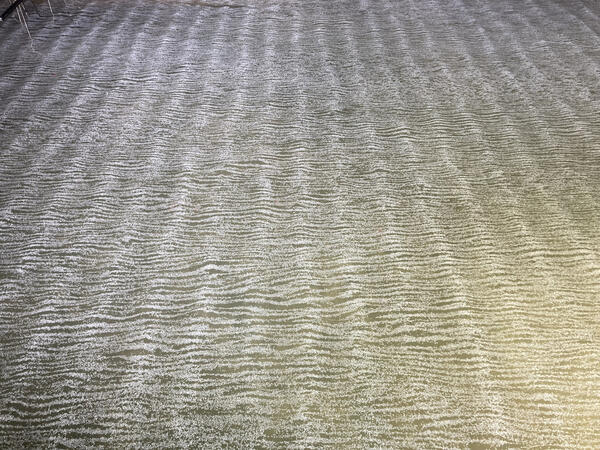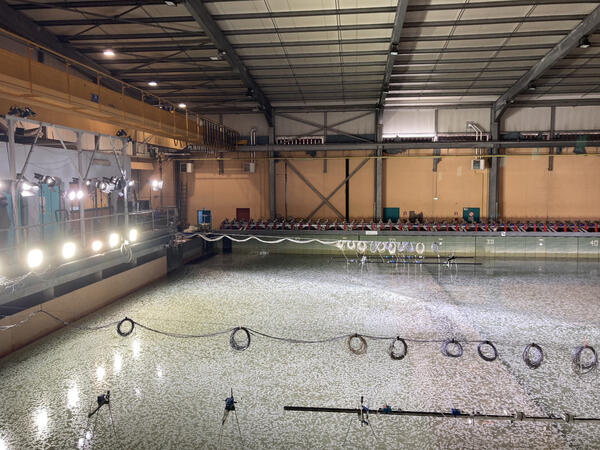
Study of soliton gases in the multidirectional wave basin
21 March 2024

LEGI back in the lab to continue soliton gas research
Two years after a first series of experiments, researchers from the Geophysical and Industrial Flows Laboratory (LEGI), laboratory of the UGA, have been carrying out further tests in the 2D basin of the LHF for a month and a half.
This campaign is carried out as part of the SOGOOD project, which is funded by the National Research Agency (ANR) and which focuses on the statistical properties of soliton gases.
A soliton on the surface of a shallow water layer appears as a solitary wave (intumescence localized in space) that propagates at a constant speed without changing shape in the case of a one-dimensional propagation.
T. Leduque, M. Kaczmarek, E. Barthélemy, H. Michallet and N. Mordant, researchers of the (LEGI), took their "quarters" in early February 2024 at the multidirectional swell pool (LHF) of our laboratory. This 27mx30m basin is equipped with a wall of 60 independent beaters to sculpt waves at will.
The goal of the campaign is to study waves in a shallow water regime (35 cm), which is characterized by the presence of solitons when the waves are large enough. In the case of a 2D propagation, as is the case in the LHF basin, and when the waves are not parallel with the walls, the propagation is much richer than in the 1D case, notably with unusual laws of reflection on the walls and interactions between more complex solitons because of their relative orientation.
Moreover, the researchers are also interested in the case of random swell regimes, where the question that arises is whether or not there are solitons depending on the amplitude of the swell and its main frequency. When we change the frequency of the waves, we change their wavelength and thus by comparing to the depth of water we can go from a deep regime to a shallow regime.
 These different regimes can then be compared to observations of ocean waves offshore or on the contrary near the coast or in lagoons. The current campaign is characterized by the massive use of two high-resolution camera pair systems allowing 3D reconstruction of the water surface over large areas (about 200 square meters) and in a time-resolved manner. Thanks to this stereoscopic technique, we can then conduct spatio-temporal analyses to finely characterize the presence and dynamics of solitons.
These different regimes can then be compared to observations of ocean waves offshore or on the contrary near the coast or in lagoons. The current campaign is characterized by the massive use of two high-resolution camera pair systems allowing 3D reconstruction of the water surface over large areas (about 200 square meters) and in a time-resolved manner. Thanks to this stereoscopic technique, we can then conduct spatio-temporal analyses to finely characterize the presence and dynamics of solitons.
A large database is currently created (about 80 TB of images have been recorded) to cover a very large number of swell regimes.
Like the previous one, this new campaign is a very nice collaboration between the technical teams of the laboratory of ARTELIA and LEGI, and fits more generally in an increasingly constructive relationship in recent years between ARTELIA, Grenoble-INP-UGA and LEGI, in particular within the framework of the OXALIA chair.

